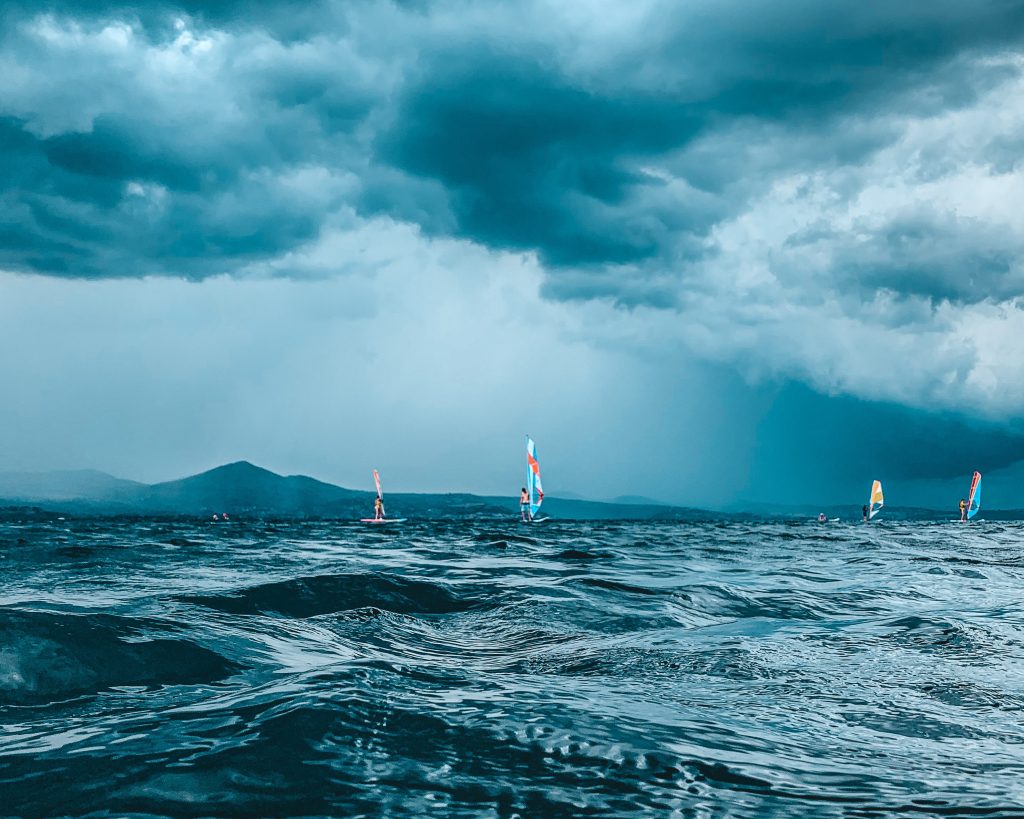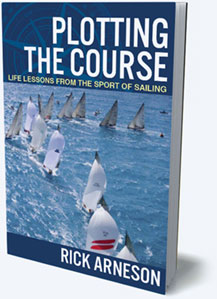
The coronavirus pandemic has been a challenge for everyone the world over, and we have all suffered disruptions to our plans to some degree or another. It’s during times like these that our patience and adaptability are truly tested. For those who struggle with such disruptive change so far from their own control, adaptability can be an emotional challenge. There is a well-known prayer, “Grant me the serenity to accept the things I cannot change, the courage to change the things I can, and the wisdom to know the difference.” Knowing the difference between the things we can change and those we can’t is a challenge for everyone, and sailors are no exception.
Change is, after all, a fact of life for sailors. Conditions are constantly changing, and the sailor must change with them. Change itself is only part of the challenge for a racing sailor, though; often it’s uncertainty that is truly unsettling. Tides are an example of predictable change; we know what the tide will be doing every day and when it will shift. Windshifts are another story; patterns may emerge, but surprises are very possible and change is constant.
The strategy in any race is to take advantage of each shift as it presents itself and to position the boat for the next one expected to come. Despite thoughtful and responsible planning, though, winds can shift and shear in different directions, spots of windless holes can appear on the course seemingly at random, and freak waves and other obstacles can pop up to get in the way. It’s a constant mental challenge to not only think ahead, but to react when the weather suddenly offers up surprises. These sorts of things test a sailor’s mettle not only in terms of skill, but patience and mental fortitude. It’s discouraging to know you’ve sailed as fast as you could, played every shift as you should have, and yet still got shafted when the breeze changed. At these moments, the sailor’s best hope of managing that frustration and staying focused is to recognize that they can’t control what happens outside their own boat. What they can control is their response to the changes that occur.
Sailboat racing, like any competitive field, has its share of high achievers who are used to a great degree of personal control over elements of their daily lives ashore. The sailors who stick with the sport over the long run and manage to succeed the most often are those who can accept what they can’t change, particularly the weather conditions and the actions of others around them, and focus on changing what they can by planning diligently for races, optimizing their boatspeed, or getting enough practice. Understanding the difference between what can and can’t be changed is how the patience and persistence to move through disruptive change is developed.
The pandemic we face in 2020 is an agent of disruption the likes of which we haven’t seen in our lifetime, and many unknown challenges still lie ahead for each of us, at least in the short term. In the frustration and discouragement that we all feel from the damage done to our daily lives and our own emotional wellbeing, we can restore some degree of hope and confidence with a change of focus. Rather than concentrating on the storm around us, thus allowing fear to take over, we can focus on our own actions in response to these conditions. Like a sailor facing volatility on the water, each of us needs to think ahead, concentrate on our priorities, be ready to adapt at any point, put safety first, and of course, never lose hope when things are hardest.
Rick Arneson, M.B.A., is the author of Plotting the Course and is a lifelong sailor.












